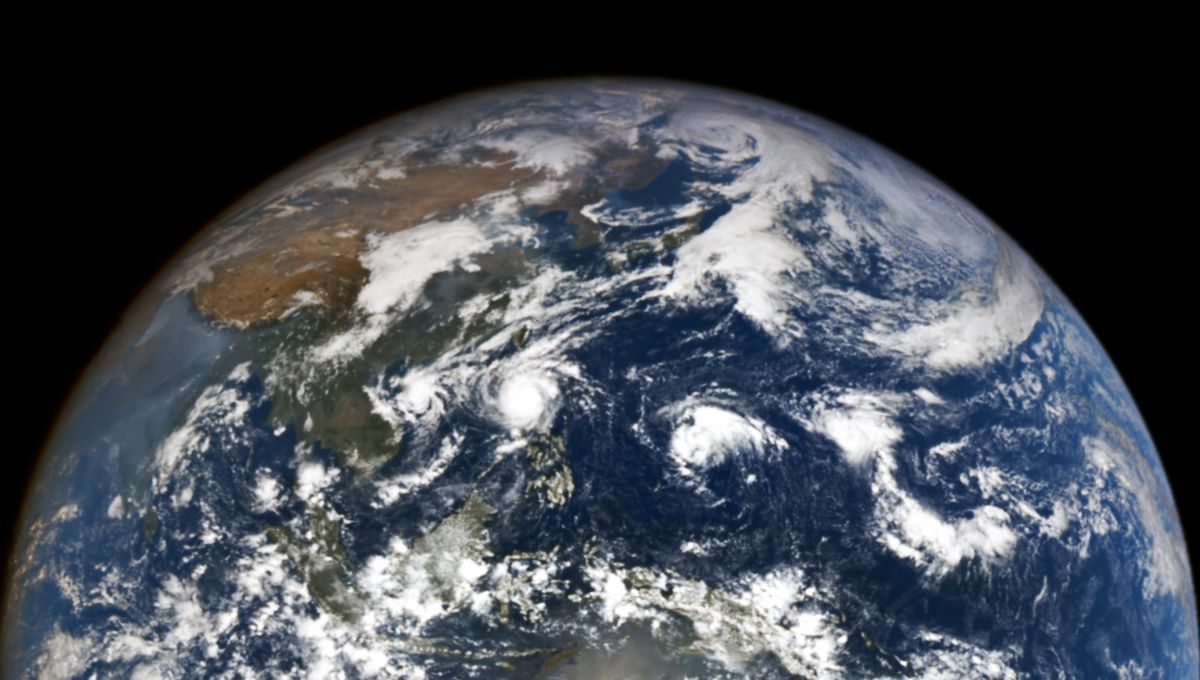
Satellite imaging captured four tropical storms present over Southeast Asia at the same time. The phenomenon is not something that scientists have recorded before in the month of November.
On November 11, NASA’s EPIC (Earth Polychromatic Imaging Camera) imager on the DSCOVR (Deep Space Climate Observatory) satellite saw something not seen in this month of the year since records began. Four storms were swirling simultaneously in the Western Pacific Ocean.
The four storms are named Yinxing, Toraji, Usagi, and Man-Yi and were either en route to the Philippines or had just traveled through the islands. As well as these names, given by the Japan Meteorological Agency, the storms have also been given local names when they get closer to the Philippines. Typhoon Toraji is locally known as Nika, Typhoon Yinxing as Marce, Typhoon Usagi as Ofel, and Typhoon Man-Yi as Pepito.
On November 7, Typhoon Yinxing (Marce) slammed into Luzon in the Philippines, while Typhoon Toraji (Nika) was gearing up to hit the Philippines just four days later on November 11. After Toraji struck the Philippines, Super Typhoon Usagi (Ofel) came in from behind and hit the same region just three days later. If you thought that was it for typhoons in the Philippines, we’re afraid you’re sorely mistaken as Super Typhoon Man-Yi (Pepito), with 240-kilometer (150-mile) per hour winds, later came racing for the coast.
A super typhoon is equivalent to a Category 4 hurricane. When it hit the Philippines on November 7, Typhoon Yinxing (Marce) made landfall in Santa Ana, Cagayan in northern Luzon. Eventually, it moved onto Vietnam as a weaker storm before dispersing on November 12.
Typhoon Toraji (Nika) formed east of the Philippines on November 8/9 before traveling west and hitting Dilasag, Aurora, on Luzon Island on November 11.
Typhoon Usagi (Ofel) became the 15th tropical cyclone to hit the Philippines this year, following the same path that Toraji (Nika) took. This means the Philippines has been hit especially strongly in November with four typhoons or supertyphoons in just a 10-day period.
Typhoon Man-Yi (Pepito) made landfall in Panganiban, Catanduanes on November 14 as a super typhoon. On November 15, it hit Dipaculao, Aurora, on Luzon Island, with wind speeds of 225 kilometers (140 miles) per hour. Man-Yi is the sixth typhoon in a month to strike the Philippines and 160 people have died in the previous five storms. More than a million people have been ordered to evacuate the area.
While the Philippines is often in the pathway of typhoons, this amount in such a short time frame is unusual. Prior to these four, Tropical Storm Trami and Typhoon Kong-rey also affected the area, with the latter the biggest typhoon to directly hit Taiwan in almost 30 years. The frequency and intensity of these storms are thought to have been made worse due to climate change, though this has not been confirmed.
Source Link: Four Tropical Storms Present Over Southeast Asia Simultaneously In Record-Breaking November